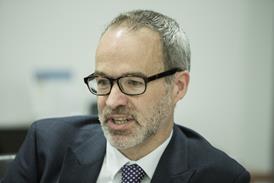
The long-term plan for the NHS, published on Monday, reveals a high level of technology and digital ambition for the service.
Naysayers were quick to point to historical failures of technology transformation programmes in the NHS. They happened. Money was poorly spent. Services remain technically weak in many areas.
But to exist, haunted by history, in a state of timidity with respect to our technical aspirations for this most critical of UK institutions, would be a huge violation of our responsibilities to protect its future.
Technological advances in the NHS
In recent years, there has been a quiet and steady flow of new technology capabilities of the highest quality into the NHS.
The Spine, which connects thousands of organisations across the health and care system and carries volumes of transactions comparable with major credit cards systems, is hugely reliable and performant.
The NHS website and a plethora of NHS approved apps provide information and support for millions of individuals annually. The national rollout of the NHS app has begun.
Ninety three per cent of England’s 7,300 GP practices now use electronic prescribing. The eReferral service, which allows patients to book their hospital appointments online, now covers every hospital and every GP practice.
NHS organisations across the country have built new innovative and highly effective digital services, funded by the global digital exemplar programme. The NHS’s internationally unique medical data is a critical enabler of the UK’s position at the forefront of life sciences invention and innovation.
The NHS is an extraordinarily large and complex system. Fully digitising it is a journey of a thousand miles. We have taken many of the early steps and proven that we are fit for the road. What lies ahead is incredibly exciting.
The long-term plan sets out the shape of our vision.
Key areas of digital agenda
A key focus of the technology and digital agenda, as with the plan overall, is allowing patients to better manage their own health and care.
A broad spectrum of digital services will support individuals to take a much more proactive and responsible approach to monitoring their own health and well being, enabling them to recognise their individual health risks and symptoms as early as possible, and manage their personal response to these risks. This, in turn, will reduce the demand for health and care services.
A “digital first” approach will enable more patients to communicate with clinicians and therapists via live video channels, without the need to be physically present where this is not necessary. In parallel, we will enable much more sophisticated monitoring of health by a patient or their carer, in their home environment, with the data from those monitors available immediately to their clinicians and their whole care team.
Faster access to all records, by patients and the clinicians and therapists involved in their care, will increase safety and efficiency. More sophisticated analysis of clinical data, using the latest technologies, including AI, will provide more sophisticated decision support for clinicians and better predictive assessments for patients and integrated care systems.
A key focus of the technology and digital agenda, as with the plan overall, is allowing patients to better manage their own health and care
It will also enable us to continuously refine and optimise clinical pathways based on evidence of best practice approaches.
A condition of this is the digitisation of all care providers, and the plan therefore commits us to accelerated rollout of electronic patient records and administrative systems for the management of health and care services.
We will leverage the extraordinary innovations in voice recognition technology and natural language processing systems to capture rich and accurate records at the point of care. This will make life much easier for clinicians, provide a much more immediate and accurate view of the care pathway for the patient, and provide richer and faster flows of data into medical research.
It will allow alerts related to the appropriateness of medication or the nuances of a particular rare condition to be automatically notified to clinicians and carers as they sit with the patient.
There are huge opportunities associated with the integration of genomic and other new advanced clinical data with traditional diagnostic data to provide rich insights into conditions and detailed prognoses for treatment options.
We must make this the generation that succeeds in the digital transformation of the NHS. We need everyone’s support in this vital mission.





























No comments yet